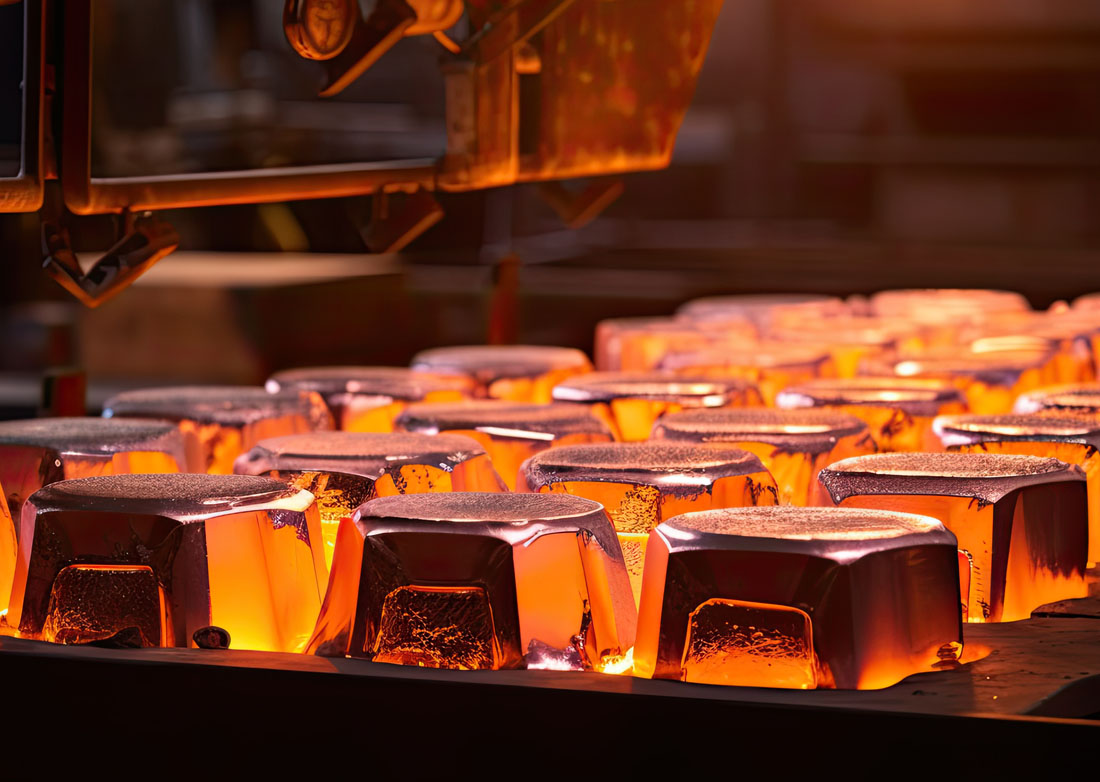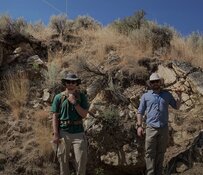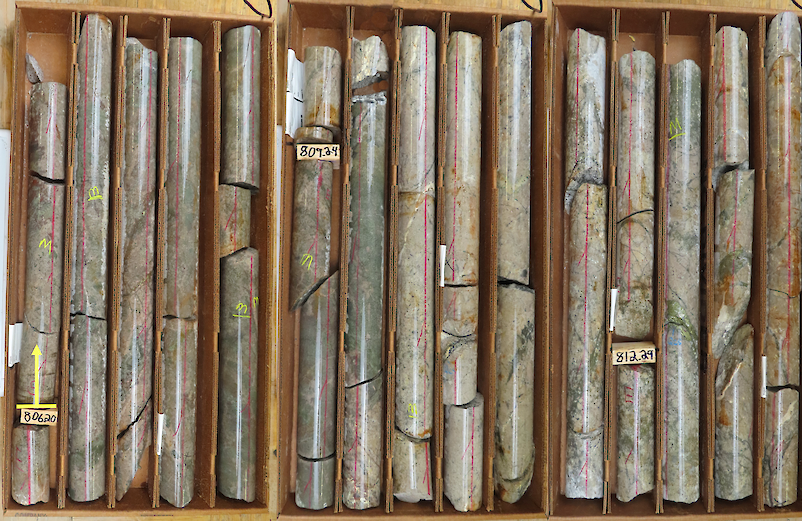The Critical Metals Report: We're seeing bubbling interest in fluorspar, or calcium fluoride, and tungsten. Let's talk a little about their uses.
Ken Chernin: Tungsten is historically known as a "war metal" because it was primarily used in ballistics. Demand and pricing followed the historical path of conflict. In recent years, the biggest market has become something called cemented carbide. It is used primarily in specialty tools that need to withstand excessive heat and require extreme durability, like drill bits for oil and gas and mineral drilling. Right now, tungsten's demand is closely linked to gross domestic product, especially with China. The reason I like tungsten is I see it changing from a demand story to a supply story.
As for fluorspar, it is used throughout the world, primarily by the chemical industry, for refrigerants and foam products and in the manufacturing of aluminum, Teflon, refined petroleum products, glass and medicine. There are virtually no substitutes for many of its uses, and it is an essential ingredient in hydrofluoric acid.
TCMR: Are you saying you see potential supply problems with tungsten?
KC: Yes, I do. Tungsten, when I first looked at it, read like a rare earth elements (REEs) story in that 86% of global supply came from China. In REEs, it's around 95%. The Chinese government seems determined to restrict exports because it has made a significant investment in downstream, higher-margin industries using tungsten. Therefore, it is determined to keep what resources it has for itself.
TCMR: Just like the REEs.
KC: Exactly. I found in my research that only three tungsten mines outside of China have operated without extended closures in the past 60 to 70 years. As a result, there was an enormous loss of tungsten-specific knowledge. Tungsten mining and processing is very unique. Today, companies with brownfield or greenfield projects will likely have trouble finding the right people.
Another dynamic is that the higher-grade deposits have been depleted. A large proportion of the new projects are very low grade. Some are 0.09% grades, which is approximately three times lower grade than some tailing recovery projects.
TCMR: China is suffering from all the environmental impact of its mining activities over the years. We certainly would like to see more attention paid to cleaner projects.
KC: Absolutely. That's a very good point. China has moved to close smaller, less efficient tungsten as well as fluorspar mines and has implemented policies aimed at consolidating both industries. That said, in late January 2012, the World Trade Organization (WTO) confirmed its findings from a mid-2011 decision that China's export restrictions on several industrial raw materials, which included fluorspar, were in breach of WTO rules. Although China claimed that the export restrictions on these industrial raw materials were justified for reasons of environmental protection or conservation policy, the WTO did not agree. The complaint was brought by the U.S., Mexico and the European Union. In March 2012, the U.S., the European Union and Japan launched a new WTO dispute against China's export quotas on tungsten, rare earths and molybdenum, and China is again citing environmental and sustainability concerns.
TCMR: Can North American investors participate in the tungsten story?
KC: Absolutely. We published a research report on Sept. 26 on three publicly traded producers. They're all listed in Canada. They're all in production. Tungsten prices have dropped since a year ago to about $350 per metric ton unit (mtu) from $450/mtu (which is 10 kilograms). If we get another sudden spike, these companies benefit immediately. All three companies' contracts are tied to the market price of ammonium paratungstate (APT), which is the main tungsten intermediate.
TCMR: What are the names of those companies?
KC: Almonty Industries Inc. (AII:TSX.V), with a mine in Spain; Malaga Inc. (MLG:TSX), with a mine in Peru and North American Tungsten Corp. Ltd. (NTC:TSX), with a mine in the Northwest Territories of Canada.
North American Tungsten is the largest tungsten mine outside of China and the only tungsten mine in North America, so it has strategic importance. However, in my mind, its remote location presents a challenge. I refer to the company as somewhat of a swing producer, as it has been closed in the past owing to low tungsten prices.
TCMR: So, it can essentially come along as the commodity price increases?
KC: Yes, the majority of the operation's costs are fixed so there is leverage there.
TCMR: Of those three companies, is Almonty your top pick?
KC: I really like Almonty. When Primary Metals, which owned the Panasqueira tungsten mine in Portugal, was sold, Almonty's partners made a 30-fold return. When Almonty came along, and specifically Lewis Black who is the chief executive officer (CEO) of Almonty Industries, the project was distressed. Black and his team turned Panasqueira into a highly efficient mine, essentially a turnkey operation. Primary Metals was acquired by Sojitz Tungsten Resources in August 2007 for CA$3.65/share, which represented a 20x earnings multiple.
TCMR: Almonty has a producing mine?
KC: It does—Los Santos in Spain. There is potential for a lot of lift there. Almonty acquired Los Santos in September 2011, and the results thus far have been impressive, with recovery rates improving to approximately 60% from 52.3% when the company took the mine over. And Almonty hasn't installed its second flotation circuit yet!
TCMR: Spain seems to be a reasonable place to have a mine in terms of jurisdictional risk, infrastructure and support.
KC: Very true. Right now, the mine is running off diesel generators, but the operation is only about seven kilometers from a power substation. Last time I spoke to the company, it was in the process of acquiring the necessary permits to install the power lines. The next step would be putting in the last flotation circuit. The company's stated goal is to achieve recoveries of 65% by the end of the calendar year. Looking at this team and what they've done so far with just putting in a hydrosizer, I believe we're going to see 75–76% recoveries. The cost per mtu has already decreased, and the company is just getting going. Next, it is looking at optimizing the mine, which is open pit.
It's impressive. I was quite impressed with Lewis Black and the chief financial officer (CFO). There is not a lot of information on tungsten out there and Black obviously knows this metal. From Panasqueira, he has put together a team with considerable experience working with tungsten. His team has essentially outlined the optimization of Los Santos in 10 months. Essentially, all Almonty has to do is install the flotation circuit and then optimize the pit.
The company is also looking for acquisitions. We believe that Almonty has aspirations of becoming a global tungsten story.
TCMR: Tell us a little about Malaga.
KC: The Malaga deposit is interesting because there are two different types of commercial tungsten deposits. One is scheelite, which Almonty and North American Tungsten have. The other is wolframite, which is what Malaga is currently mining. Wolframite is much easier to work with and adequate recoveries are achieved with the gravity tables coupled with magnetic separation; flotation is not necessary. The other thing that's really interesting about Malaga, aside from being one of only a few wolframite mines in the Western world, is that it has a 49% interest in a hydroelectricity plant that currently provides approximately 70% of the mine's power demand, with the remaining power coming from the national grid. For these reasons, it is the lowest-cost tungsten concentrate producer of all the publicly traded tungsten companies.
Management recently changed about a year ago. The new CFO, Pierre Monet, has recently started the construction of a tailings recovery pilot plant. This is interesting because it is partially funded by Global Tungsten & Powders Corp. (private), with which it has an offtake agreement. If the company achieves its targeted 50% recovery rate, we estimate that the tailings recovery could increase the company's total tungsten concentrate production by about 14% and reduce cash costs per mtu by about 7%.
TCMR: This would be an interesting one.
KC: It is interesting. The project is Pasto Bueno, which means "good ground." The mine has been in existence since 1910. If the pilot plant works, management is going to install additional similar screens into its main processing facility. If the installation of these screens meet management's expectations, it may be able to boost recoveries by about 5%, which would put it up to about 80%. This would be meaningful for its cost per mtu.
Very little exploration work has been done on the property. What exploration has been done was always focused on the north end of the project. Malaga's new CEO drilled a few holes in the southern portion and discovered a scheelite deposit. The grades thus far look to be encouraging. It has potential to be a high-grade and sizable new tungsten project with excellent infrastructure that is very close to the existing mine. That's very unique.
TCMR: What can you tell us about North American Tungsten, since it's really the only North American tungsten outfit?
KC: It has two projects. Cantung has been in operation since the 1960s.
TCMR: Is it currently producing?
KC: Yes, in fact it is the largest producing tungsten mine in the Western world. Its production in 2011 was approximately 224 thousand mtu (Kmtu), whereas Malaga's was approximately 55 Kmtu and Almonty's was approximately 65 Kmtu when it was owned and operated by Heemskirk Consolidated Ltd. (HSK:ASX). It has a compelling valuation. It's trading at about 50% of our net present value estimate. Again, it's a high-cost operation on the back of logistic challenges. It has good recoveries and high grades.
How this operation is run is encouraging, but there are a couple of issues: the diesel and labor. There is one road in, one road out, which was washed out in June 2012 and resulted in operations being suspended for almost two weeks. I believe that this is indicative of the challenges management faces due to the project's remote location. Workers are flown in and out, and the mine is virtually competing with every mine in Northern Canada for workers.
TCMR: Let's talk about fluorspar. What is it used for?
KC: It's calcium fluoride—51.1% calcium and 48.9% fluorine. The uses depend on the grade, of which there are three. Acid grade is 97.5% purity. Metallurgical grade goes for much less and chemical grade does not account for much of the market.
Acid grade is what we're interested in. Global production of fluorspar in 2011 was 5.6 million tons (Mt). World market value is only about $2 billion (B). However, that feeds a $30B end market, which is not substitutable. It cannot be replaced. Like tungsten, demand is relatively inelastic. Price won't really impact how much is used.
The biggest market is fluorcarbons. It's in your brake lines, it protects your gas tank and it's in your refrigerator. You can't make Teflon without it. It's in your air conditioning. In fact, for refrigeration and cooling, you really can't replace it, unless you use carbon dioxide (CO2) compression.
TCMR: Many consumers in developing countries don't currently have refrigerators and they want them. Is that an essential part of the demand picture?
KC: Absolutely. China has invested billions of dollars going downstream. The biggest use for this is hydrofluoric acid. From there, we go into fluorochemicals, the fluoropolymers, which is your Teflon, and your photovoltaics, or solar panels. It has green energy applications. But China went downstream. It started producing the hydrofluoric acid and has excess capacity. It went further downstream and built factories for refrigerants. Now it is building fridges and air conditioners.
TCMR: Can China produce enough of its own hydrofluoric acid to supply its own needs?
KC: It has the capacity for the hydrofluoric acid. I believe China will be a net importer of fluorspar in the near future. China has the purest fluorspar, next to Morocco. Fluorspar from every region has various impurities, and fluorspar users typically blend concentrate from various mines. The higher purity for acid fluorspar does go for a premium.
TCMR: How would an investor participate in the fluorspar market?
KC: Canada Fluorspar Inc. (CFI:TSX.V) is fully financed and permitted. It appears to be capable of producing high-quality fluorspar concentrate.
TCMR: Where is this asset?
KC: It's on the south coast of Newfoundland. It's phenomenal. If you throw a baseball, you could probably hit the ocean from its flotation mill.
TCMR: Does Canada Fluorspar have any problems in terms of shipping lanes and infrastructure?
KC: No. It plans to use the excess capacity of ships entering/exiting the St. Lawrence Seaway. An adequate port facility has been an issue for past operators as the existing port facilities are not deep enough for larger vessels. Canada Fluorspar has a $17M, interest-free loan from the government of Newfoundland to build a wharf that will be able to accommodate large Panamax ships.
TCMR: Where is Canada Fluorspar in terms of its production profile?
KC: It will produce 125 Kt/year.
TCMR: How far along is the project?
KC: They are working to complete a new feasibility study before the end of October. It's interesting. Arkema Inc. (PA-AKE), the French chemical giant, came into this project on a joint venture. There are three mines on the property. Arkema essentially purchased 50% of two mines, the existing flotation mill, access to the tailing ponds and access to the port facility for CA$76.5M consisting of a CA$61M investment in the JV and CA$15.5 million investment in Canada Fluorspar, which represents approximately 19.9% ownership in Canada Fluorspar.
TCMR: When does it plan to begin building the facilities there?
KC: In 2013, with production by the end of 2014. It's fully financed and permitted. It's a done deal.
TCMR: Is this the only public fluorspar company?
KC: There is a company in South Africa, Fluormin Plc. (FLOR:LSE), which has been challenged largely due to power and water supply disruptions.
Another reason why I like Canada Fluorspar is that there is a third, past-producing mine on that property called the Director, which when closed by a previous operator, had approximately 2 Mt of reserves with an average grade of 56% CaF2. The other two mines have grades of approximately 30% and 40% CaF2.
Canada Fluorspar recently completed a nine-trench exploration program and the assay results are encouraging, with a 9.4-meter section grading 90.7% CaF2. The trenching program uncovered a vein structure on the south extension of the Director Vein, which could indicate that the Director Vein extends approximately one kilometer to the south of the old Director Mine workings.
TCMR: It looks like there couldn't be a better spot in terms of infrastructure.
KC: It's excellent. This is the best part about the third vein and another reason why I like the stock. Management is targeting to have an NI 43-101 resources report on the deposit in the spring of 2013. We likely could be looking at an open-pit operation—the other two mines are in-ground—and a flotation mill. The company could potentially double the project's production for a fraction of the cost of the first phase of the project.
TCMR: Do you see a major fluorspar end user being interested in this space? Could a company like Canada Fluorspar be an acquisition candidate by Xstrata PLC (XTA:LSE) or Glencore International Plc (GLEN:LSE; 0805:SEHK)?
KC: I'm glad you asked that question. In February 2012, the aluminum company RUSAL acquired the remaining 50% of Russia's only fluorspar producer, OOO Yaroslavsk GRK, from Russkaya Gornorudnaya Kompaniya (RGRK). Fluorspar is used to produce aluminum fluoride, which is used in the production of aluminum. And in January 2012, the chemical group Solvay announced it acquired a 30,000t per year fluorspar mine in Bulgaria from Italy's M&M Group. DuPont and Honeywell are also big consumers of fluorspar
TCMR: Explain to me why fluorspar is so rare from a geological perspective.
KC: That's a good question. There simply aren't many undeveloped deposits that have sufficient grade, scale and/or infrastructure and good logistics.
Canada Fluorspar is a great story. It will go into operation. The CEO, Lindsay Gorrill, is an experienced operator. The general manager used to work as a mining engineer at the project when it was owned by Alcan.
TCMR: Do you have any final thoughts for us?
KC: Tungsten is typically low grade, and the lower the grade, the less room for error. Furthermore, if a company doesn't have a team with tungsten-specific experience, you very well could be looking at headaches and stumbles. Scale, of course, along with logistics is also important. I look at power lines, roads and workforce.
TCMR: Fluorspar's investment thesis involves escalating consumer demand for the products that contain the material, is that correct?
KC: Yes, and that China doesn't seem to be opening its door. Although the WTO has upheld the complaints we discussed, the country appears to continue to make strides into higher-margin, value-added fluorochemical products, and likely needs its internal production.
TCMR: This has been fascinating. Thanks for sharing your insight.
KC: It's been a pleasure.
Ken Chernin has been an equity research analyst with Jennings Capital since November 2008. Prior to joining Jennings, Chernin was a special situations analyst at an Atlantic Canadian investment dealer, where he focused on Atlantic Canadian oil and gas, utility, food retail and real estate companies. He also worked as a research associate for a Toronto-based brokerage firm and in risk management for a Canadian funds management firm. He has corporate governance experience with the Clarkson Centre for Business Ethics and Board Effectiveness at the University of Toronto and the Canadian Coalition for Good Governance. Chernin holds a Master of Business Administration from the Rotman School of Management at the University of Toronto and a Bachelor's in communication from Saint Mary's University, Halifax.
Want to read more exclusive Critical Metals Report articles like this? Sign up for our free e-newsletter, and you'll learn when new articles have been published. To see a list of recent interviews with industry analysts and commentators and learn more about critical metals companies, visit our Critical Metals Report page.
DISCLOSURE:
1) Sally Lowder of The Critical Metals Report conducted this interview. She personally and/or her family own shares of the following companies mentioned in this interview: None.
2) The following companies mentioned in the interview are sponsors of The Critical Metals Report: None. Interviews are edited for clarity.
3) Ken Chernin: I personally and/or my family own shares of the following companies mentioned in this interview: None. I personally and/or my family am paid by the following companies mentioned in this interview: None. I was not paid by Streetwise for participating in this interview.




































